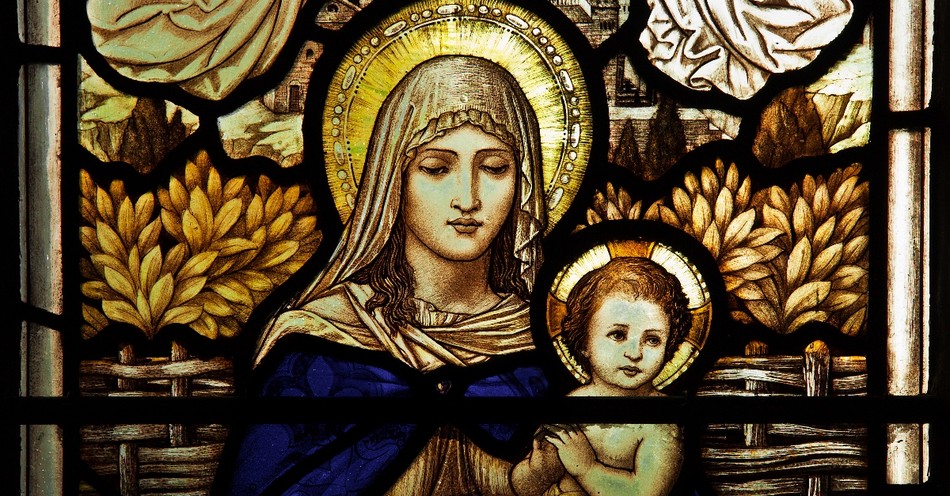The Rosary: A Marian Contemplative Practice and its Christocentric Theological Significance
Introduction: Defining Key Concepts
This essay examines the Rosary, a central devotional practice within Catholicism, analyzing its theological foundations and spiritual efficacy. We will investigate its structure, focusing on the various sets of mysteries and their symbolic representation within the broader contexts of Marian theology and, crucially, Christology. Central to our analysis are the concepts of Marian devotion (the veneration of Mary, Mother of God, and her role in salvation history); Christocentricity (the theological principle emphasizing Christ as the central figure of salvation); and contemplative prayer (a form of prayer focused on reflective meditation and fostering a mystical union with the divine). We will utilize relevant theological models, including the concept of intercessory prayer (prayer requesting God’s intervention through the intercession of a holy person) and the sacramental economy (the system of grace mediated through the sacraments within Catholic theology). These concepts will be applied to analyze the Rosary's structure and its impact on spiritual formation.
Biblical and Theological Underpinnings of Marian Devotion and the Rosary
The theological basis for Marian devotion, and by extension, the Rosary, is firmly rooted in scripture and tradition. The Annunciation narrative (Luke 1:26-38), depicting the Incarnation, establishes Mary's pivotal role in salvation history. Subsequent biblical passages and patristic writings reinforce her unique status as Theotokos (God-bearer), Mother of God. Dogmas such as the Immaculate Conception and the Assumption further solidify her sanctity and her privileged place within the soteriological economy (God’s plan for salvation). These beliefs, sustained by centuries of theological reflection and Catholic tradition, directly inform the devotional practices, such as the Rosary, expressing veneration towards Mary. This historical and theological context is paramount for grasping the Rosary's profound significance within the Catholic faith.
The Structure and Symbolic Significance of the Rosary Mysteries
The Rosary’s structure follows a cyclical pattern of prayers, primarily the Hail Mary, interwoven with meditations on specific events in the life of Jesus Christ—the Mysteries. This repetitive structure facilitates contemplative prayer, enabling deeper engagement with the narrative of salvation. The traditional mysteries are categorized into Joyful, Sorrowful, Glorious, and Luminous sets. Each set offers a distinct perspective on Christ's life, death, and resurrection. The Joyful Mysteries focus on the Incarnation and its immediate aftermath, highlighting divine grace and Mary's role in God's plan. The Sorrowful Mysteries emphasize Christ's suffering, underscoring the significance of his sacrifice. The Glorious Mysteries celebrate Christ's triumph over death, focusing on resurrection and ascension. Finally, the Luminous Mysteries, added by Pope John Paul II, illuminate Jesus' public ministry, emphasizing key events revealing his identity and mission. Analyzing these mysteries through the lens of narrative theology provides a richer understanding of their theological depth and spiritual import.
Mary's Role as Intercessor and Spiritual Guide within the Rosary's Framework
The Rosary inherently integrates Marian devotion. The repeated recitation of the Hail Mary, a prayer invoking Mary's intercession, underscores her role as a model of faith and a powerful advocate before God. This aligns with the theological concept of Mary as mediatrix, assisting in bringing humanity closer to Christ. The meditative structure facilitates personal reflection on Mary's life and her relationship with Jesus, promoting emulation of her virtues and fostering appreciation for her maternal role in Christian faith. This resonates with theological models emphasizing spiritual mentorship and the emulation of virtuous role models, illustrating the process of spiritual formation through imitation of Christ and his holy mother.
The Rosary as a Vehicle for Contemplative Prayer and Spiritual Transformation
The Rosary's repetitive structure and focus on meditative reflection directly support contemplative prayer. The systematic engagement with the mysteries and the rhythmic repetition of prayers cultivate mindfulness and interiority, fostering deeper connection with God and heightened awareness of His presence. This aligns with contemplative prayer principles, aiming at deep communion with the divine through reflective meditation and self-emptying (kenosis). Regular Rosary practice promotes spiritual growth, enhancing faith, hope, and love, transforming the individual's relationship with God and others. This transformative process can be understood through the lens of spiritual psychology and its effects on personal development.
The Rosary in Catholic Tradition and the Witness of Sainthood
The Rosary is deeply embedded in Catholic tradition, championed by numerous saints and theologians. Figures like Saint Louis de Montfort and Saint Teresa of Calcutta exemplify its spiritual efficacy and transformative power. Their writings and experiences demonstrate the Rosary's capacity to deepen faith, offer solace, and serve as a tool for spiritual growth, highlighting its importance in Catholic spirituality. The historical witness of these figures strengthens the Rosary's efficacy and underlines its enduring relevance in contemporary spiritual practice. This historical perspective adds weight to the claims of the Rosary’s spiritual efficacy and provides a case study for the power of devotional practice within a religious tradition.
Conclusions and Recommendations
The Rosary, viewed theologically, is not merely a repetitive prayer, but a powerful instrument for spiritual growth and transformation. Its structure facilitates contemplative prayer, enabling profound engagement with Christ’s life, death, and resurrection, and Mary’s role in salvation history. The systematic meditation on the mysteries offers a rich source of spiritual insight, fostering a closer relationship with both Jesus and Mary. Future research might explore the psychological and neurological impacts of contemplative practices like the Rosary, examining its effects on stress reduction, emotional well-being, and cognitive function. This could illuminate the multifaceted benefits of this traditional practice. Furthermore, promoting the Rosary within pastoral settings could significantly enhance spiritual formation programs. A multidisciplinary approach, integrating theological, psychological, and neuroscientific perspectives, is recommended for future research on the Rosary's impact.
Reader Pool:
Given the analysis presented, how might incorporating the Rosary’s contemplative and intercessory dimensions into modern pastoral practices enhance spiritual formation and community engagement?







